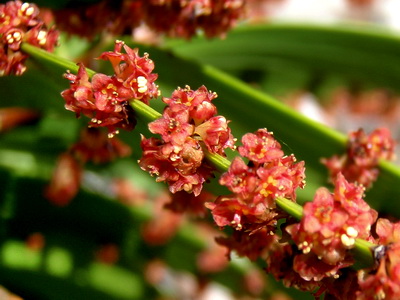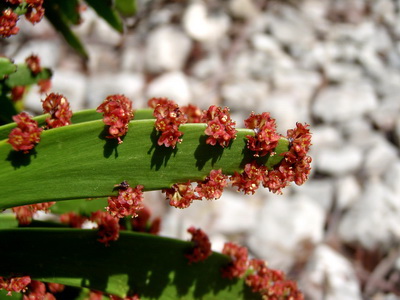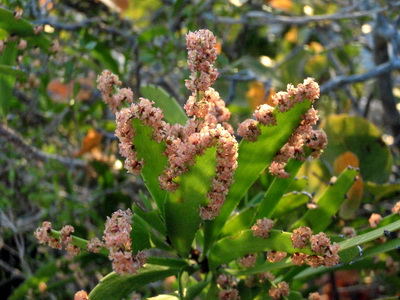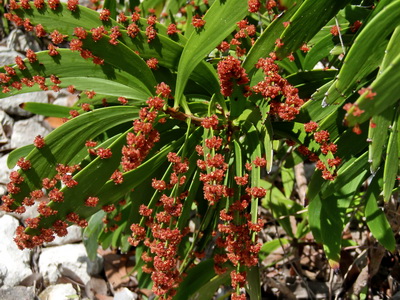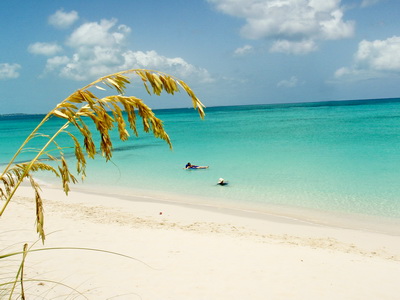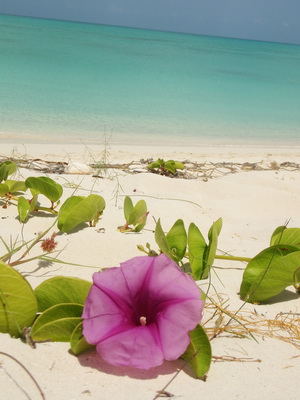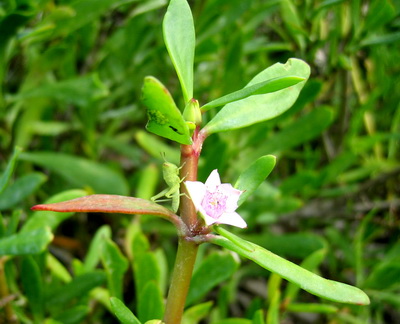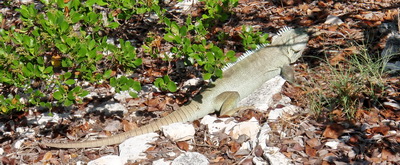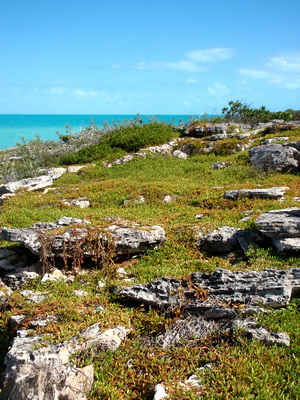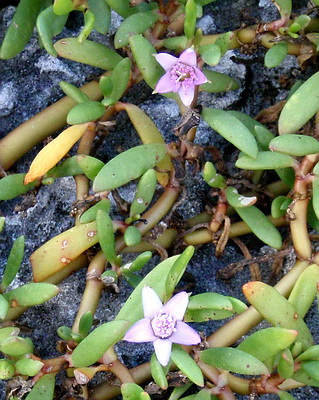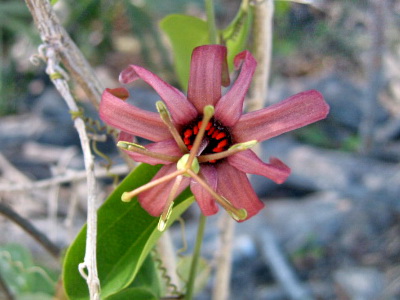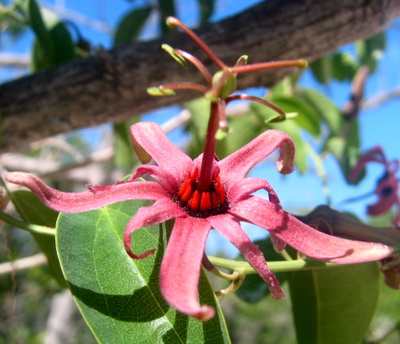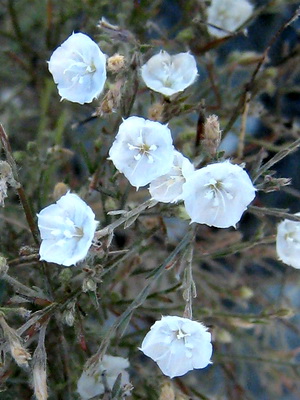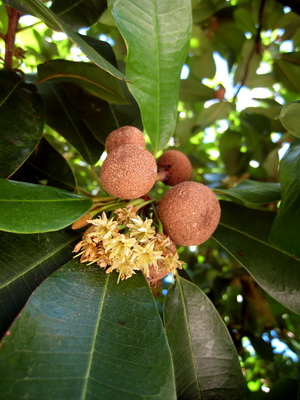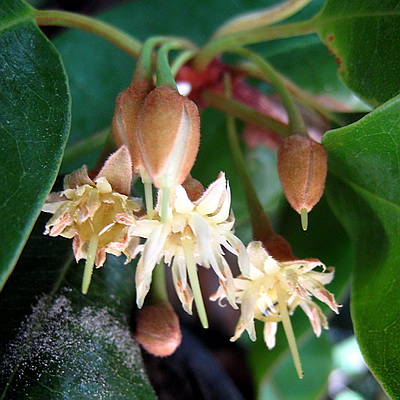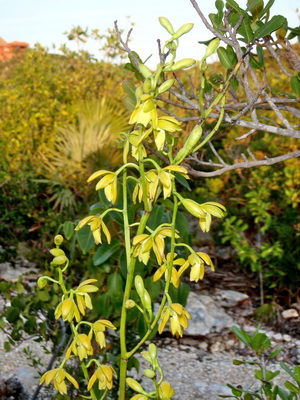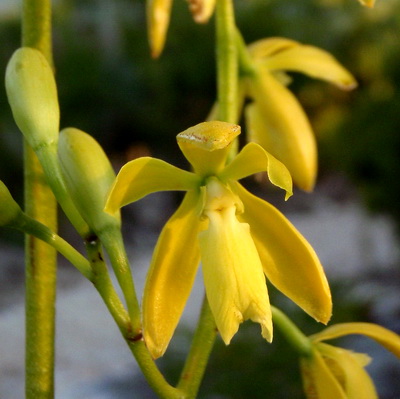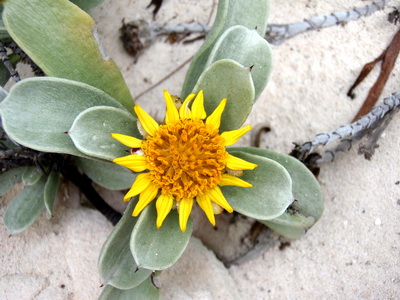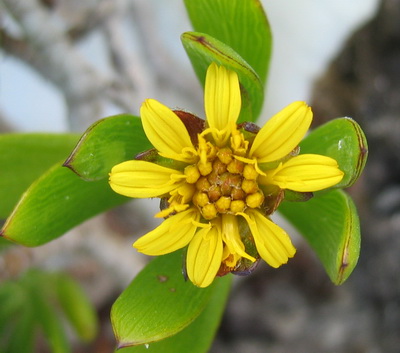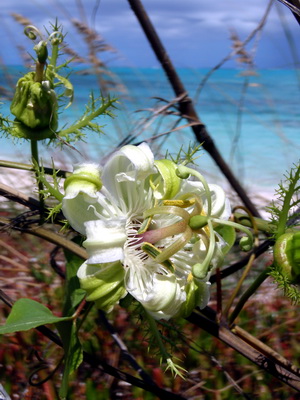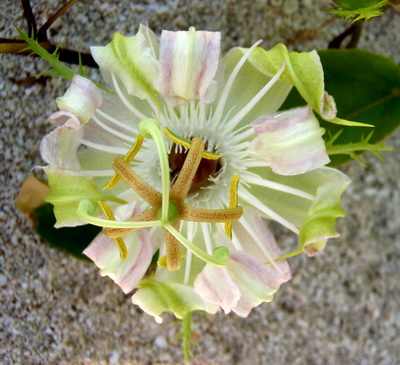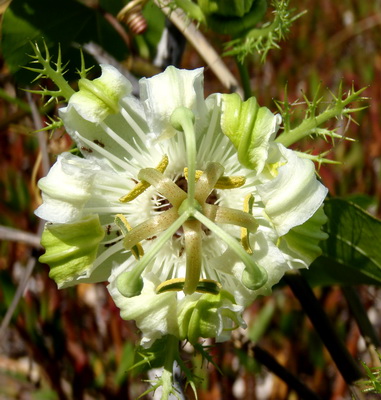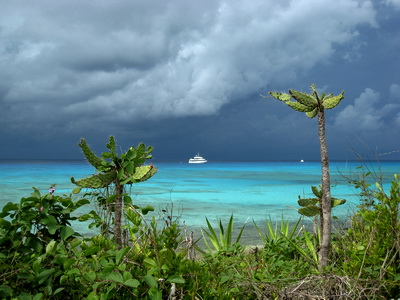This is an amazing looking shrub when you get up close to it. The leaf like branches are elongated and flattened but what’s interesting is that there are ridges or toothed areas along the leafs edge. From these toothed areas, minute little clusters of flowers appear.
The Sword Bush is fairly common in our area and I found both pink and red clustered flowers as I wandered around the bush here at the villas.
In bush medicine, the Sword Bush can be used for coughs and colds………….I’m not quite brave enough to try this but I am fighting through a sore throat, cough and cold as I write this! The leaf like branches can be chewed and then spat out. The bitter tasting leaves can be boiled into a pretty bad tasting tea which supposedly stops vomiting.

